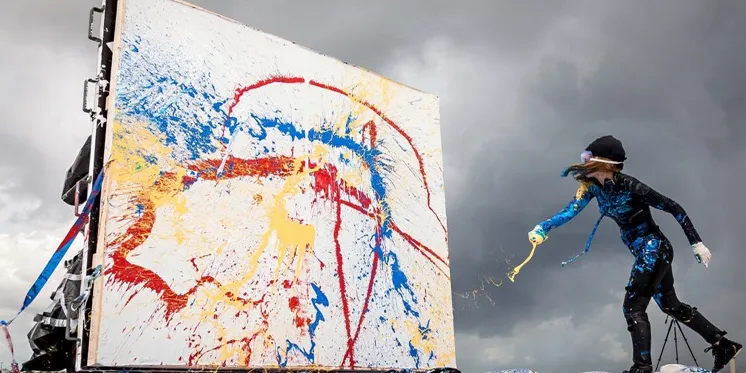Expressive Abstract Art: Techniques for Creating Emotionally Charged Pieces
Grab your tools and let your emotions flow onto the canvas, creating emotionally charged pieces that resonate with both you and your audience

1. Embrace Intuitive Mark-Making
One of the key elements of expressive abstract art is embracing intuitive mark-making. Allow your emotions to guide your brush, pencil, or other tools across the canvas. Don't overthink it; instead, trust your instincts and let your inner emotions flow onto the canvas. This freedom can lead to authentic and emotionally charged artwork.
2. Use Color Symbolism
Colors have a profound impact on our emotions. Consider the emotions associated with different colors when creating your abstract piece. For instance, red can represent passion and anger, while blue may evoke calmness or sadness. Experiment with color combinations to convey the specific emotions you want to express in your artwork.
3. Experiment with Texture
Texture can add depth and emotional intensity to your abstract art. Experiment with various techniques like impasto (thick, textured layers of paint), palette knife application, or mixed-media elements like collage to create tactile experiences that resonate with the viewer's emotions.
4. Explore Gesture Painting
Gesture painting involves using broad, sweeping brushstrokes to convey motion and emotion. Allow your hand and arm movements to express your feelings on the canvas. This technique can evoke a sense of energy, spontaneity, and raw emotion in your artwork.
5. Work with Layers and Transparency
Layering your artwork with transparent or translucent materials, such as glazes or watercolor washes, can create a sense of depth and complexity. This approach allows you to build up emotions gradually, making your artwork feel multi-dimensional and emotionally charged.
6. Incorporate Symbolism and Imagery
While abstract art often lacks recognizable imagery, incorporating symbols or shapes that hold personal meaning to you can add depth and emotional resonance to your work. These symbols can act as visual metaphors for your emotions and experiences.
7. Practice Mindfulness and Emotion Awareness
Before starting a new abstract piece, take a moment to center yourself and connect with your emotions. Mindfulness techniques can help you tap into your inner feelings and translate them into your artwork more authentically.
8. Allow for Mistakes and Changes
Emotionally charged abstract art can be unpredictable. Don't be afraid to make mistakes or change direction during the creative process. Sometimes, these unexpected moments can lead to the most emotionally powerful results.
JOIN US for a painting and wine class and express yourself on a canvas! This Fall (and into the Holiday Season), we're offering some of our most-loved paintings and we hope you'll join us for some of these fabulous classes!

